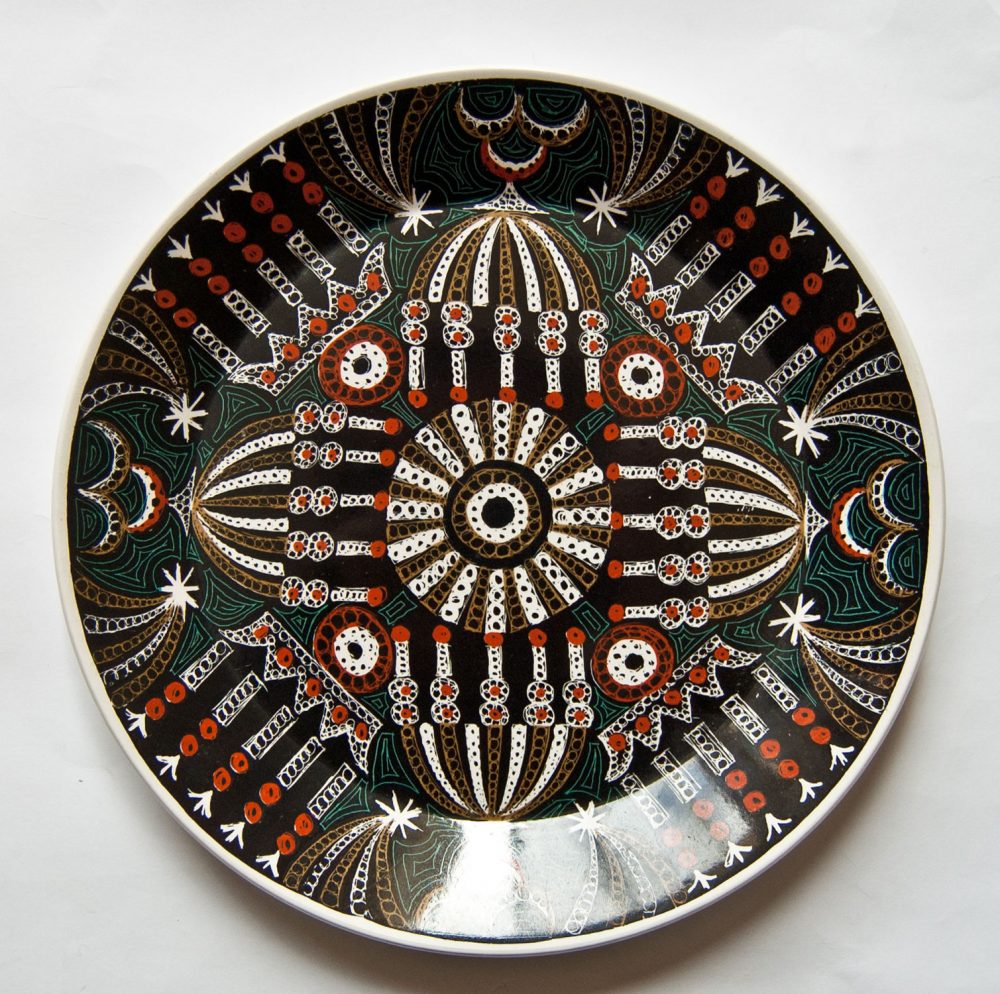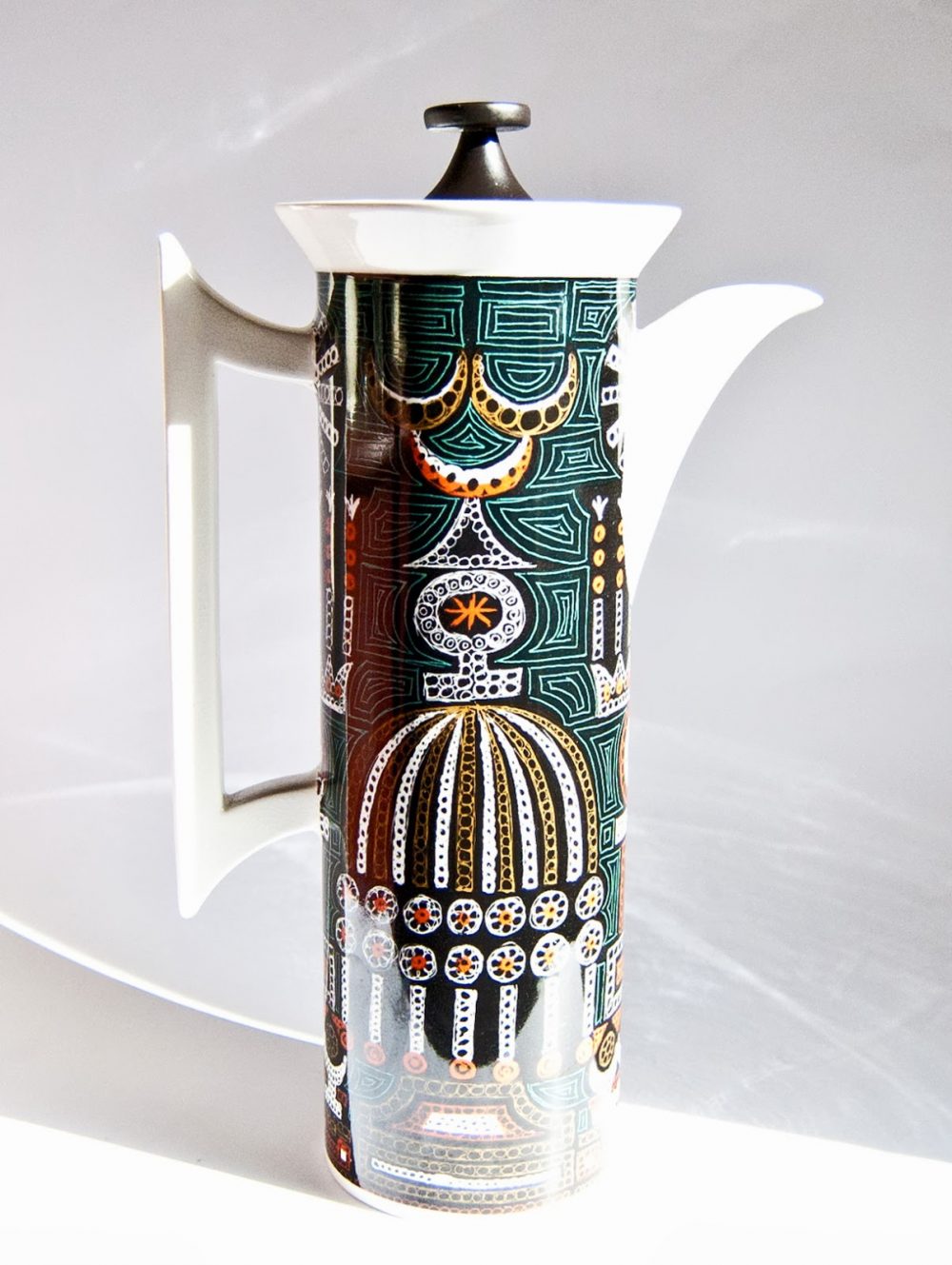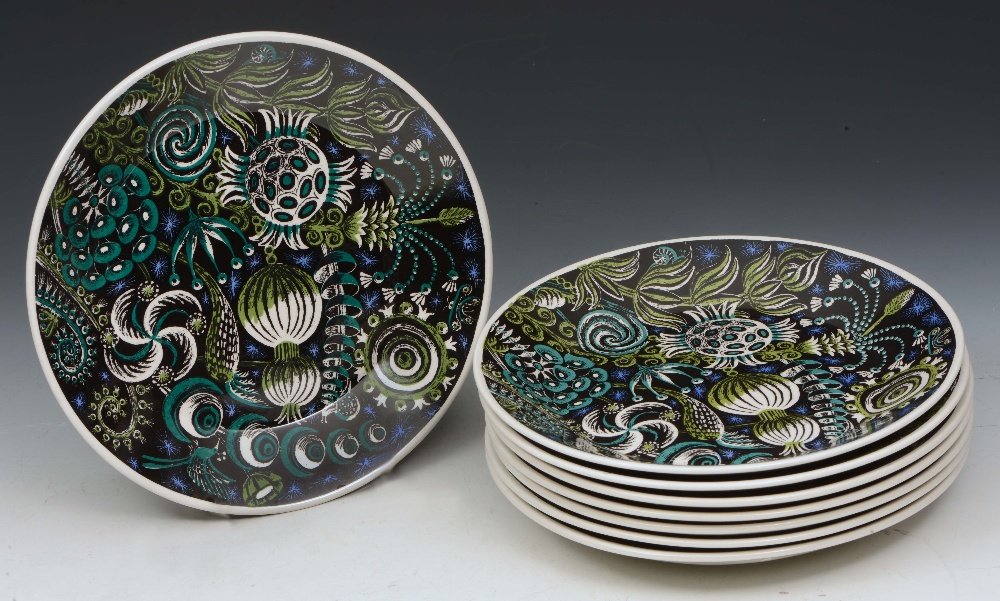Portmeirion Magic City
I think this design is just magic. It is appropriately named Magic City. The design was inspired by exotic middle eastern inspired domed buildings, and always reminds me of this time of year with a festive look about the design with its use of colour and line which hint of fireworks, Christmas lights etc, as well as the domed buildings of the Middle East.
It was designed by Susan William-Ellis at Portmeirion Pottery in 1966, and has become one of the great British classics of the era. The forms were used in several series which Susan designed around this time – and the shape was called “Serif”. Serif refers to the shape of the handle – and is a reference to how a serif is used in typography/calligraphy to add flare to the end of a corner.
The Serif series of shapes was originally used on the Cypher and Jupiter patterns with a raised relief finish, but it is Magic City which became the most commercially successful. Magic Garden is another lovely design on the Serif series of shapes.
Of interest – if you are in or visiting London 2019 – there is an exhibition/display in the ceramics room 146 of Portmeirion “Pottery Trendsetter” until Sunday 28th July

Portmeirion Magic City Tea Cup





As a reference, below is an image of “Magic Garden” – a much harder design to find than “Magic City”






